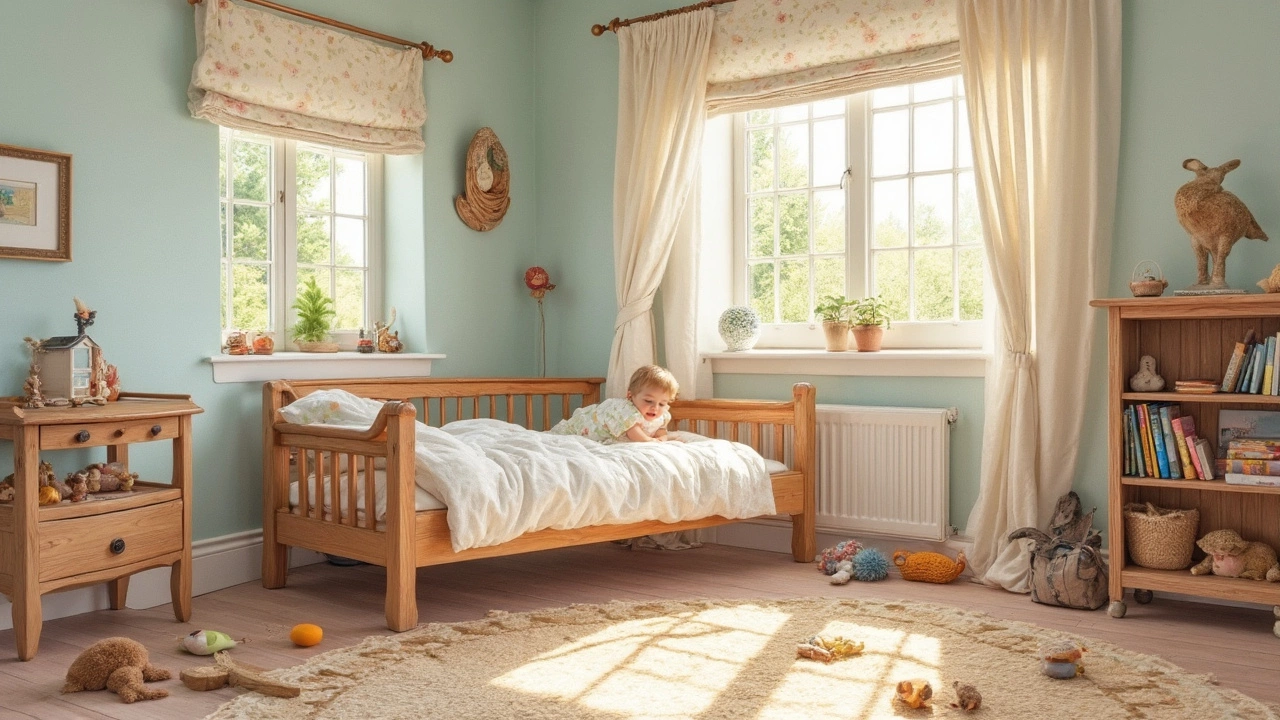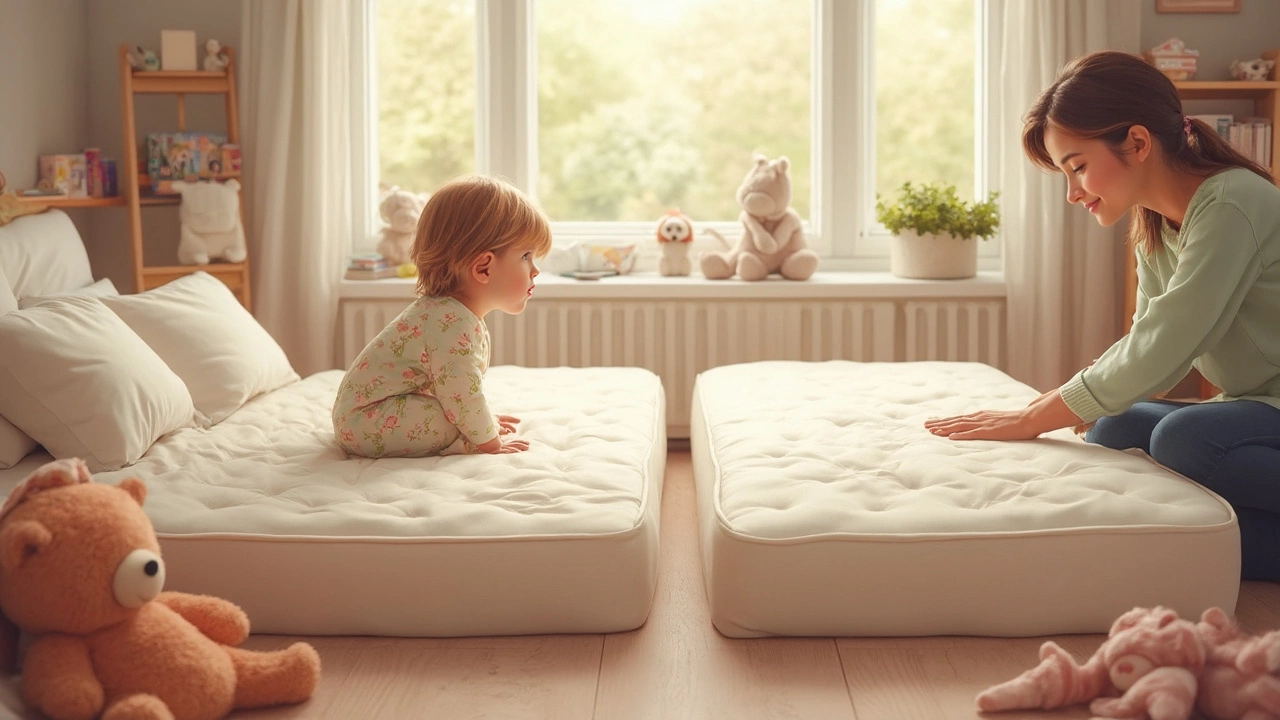When Do Kids Transition from Toddler to Big Kid Beds?
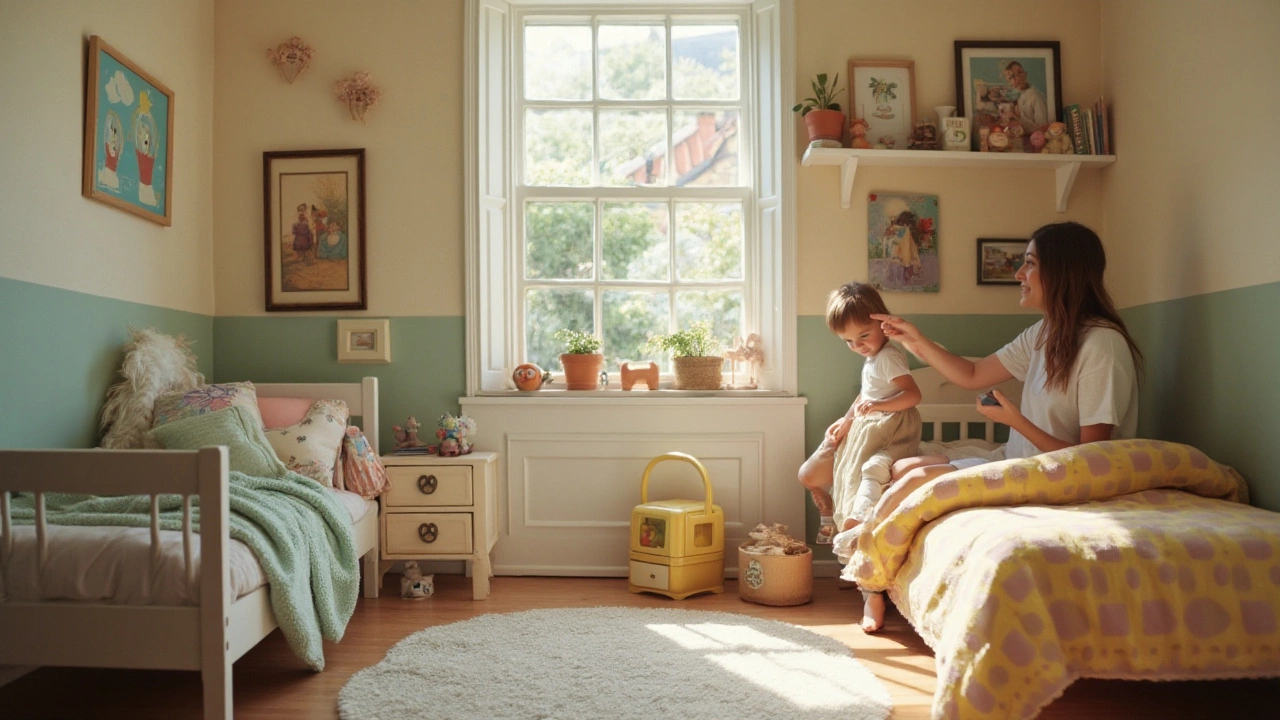
A crucial part of parenting is knowing when it’s time for your child to transition from a toddler bed to a regular-sized bed. This change, while exciting, can also be a bit challenging for both the child and the parents. The key lies in observing your child’s growth and comfort, balancing safety, and responding to their budding independence, which often shows itself in the most surprising ways.
Typically, this transition occurs between the ages of 4 and 6, although the exact timing varies widely. Parents are advised to watch for signs like overcrowding in the small bed or a child's eagerness for a more grown-up sleeping arrangement. Understanding the needs and readiness of your child, along with practical safety tips, can make this change not only smoother but also joyful, marking another milestone in their development.
- Signs Your Child Is Ready
- Age Range for Transition
- Safety Considerations
- Bed Size and Space Needs
- Making the Transition Smooth
- Tips for Parents
Signs Your Child Is Ready
Recognizing the moment your child is ready to move on from their cozy toddler beds to a more spacious sleeping arrangement can be both a science and an art. One of the most telling signs is your child physically outgrowing their current bed. While toddler beds are designed to accommodate young children comfortably, the average child outgrows them between the ages of 4 and 6. Children at this stage are not only getting taller but are also experiencing a significant increase in their restless sleep patterns as they grow, making the dimensions of a toddler bed abruptly inadequate.
Parents may also notice behavioral cues, such as their child's newfound enthusiasm for all things older kids do. This includes expressing a keen interest in 'big kid' beds they may have seen during visits to family or friends. This desire for independence is a natural progression of their growing self-awareness and developing personality, and it’s a great opportunity to encourage them to communicate their feelings and preferences in what could be their first major ‘grown-up’ decision.
Safety is another critical consideration as your child demonstrates readiness. If you find them starting to climb out of their toddler beds, this could pose a risk of injury and signal the need for a transition. Toddlers are naturally curious and love to explore their environments, often leading them to climb over the edges of their confined beds. Many parents will find themselves surprised by their little one's acrobatics in the middle of the night!
Interestingly, some parents choose the transitional timing based on the needs of the family, such as the arrival of a new sibling. A growing number of families opt to align the move with another notable moment in their child’s life, thereby intertwining the new bed with positive memories. In fact, Dr. Tanya Altmann, a respected pediatrician, discusses the opportunity of such transitions stating,
'The move from toddler bed to a big bed isn't just about the size, it's a leap in your child’s sense of independence.'This illustrates a time when your child’s responsibilities and awareness are climbing right along with them.
Yet, readiness is not merely determined by physical and behavioral indicators. Emotional readiness plays a crucial role as well. Some children might feel overwhelmed by a large bed and all it represents in terms of growing up. Others may embrace the new experience with excitement. It's important for parents to gauge their child's reaction to the idea of a transition and ensure they feel safe and secure in their new sleeping environment. Creating a comfortable and inviting new bed, complete with familiar sheets, stuffed animals, and even story-time rituals adapted to the new space, can ease the process remarkably.
In a way, transitioning from toddler beds is as much about practical aspects as it is about emotional growth and independence. Being aware of and responsive to the signs can make this milestone as smooth and exhilarating as the first steps your child ever took.
Age Range for Transition
Understanding the exact age when a child should move from a toddler bed to a bigger bed is essential but varies from child to child. Child development experts often suggest that children are ready for this big step as they approach the age of 4 years, though flexibility is key here since every child grows at their pace. Observing how they sleep and whether they seem cramped can help parents decide the right time for a change. The transition is not just a matter of age; it's more about the physical development and willingness of the child. As children mature, they start to crave more autonomy and may express interest in a bigger bed because it makes them feel more like an independent 'big kid.' This desire is a clear signal that a shift in sleeping arrangement might be appropriate.
An interesting statistic from pediatric sleep studies shows that around 70% of kids between 4 and 5 years make the switch from toddler beds, aligning with increasing physical growth metrics and spatial awareness. Another consideration is potty training. Many parents find that as their child begins to master this skill during the night, access in and out of bed with ease becomes necessary, prompting a need to transition to a larger bed. Emphasizing the creation of a safe and inviting sleeping environment can help manage this significant change smoothly.
“Encouraging a child to participate in setting up their new sleeping space can help them transition more smoothly and happily,” notes Dr. Samantha Walters, a renowned child psychologist.
Planning ahead ensures that by 6 years of age, most children have comfortably transitioned. However, some children may cling to their toddler beds due to familiarity or comfort. It's pivotal for parents to celebrate this transition as a milestone, rather than a simple change in furniture. Involvement in the decision-making process, like choosing a bedspread or deciding the theme, fosters a sense of ownership and excitement for their new, big-kid role.
| Age | Percentage Transitioned |
|---|---|
| 4-5 years | 70% |
| 5-6 years | 85% |
| 6+ years | 95% |
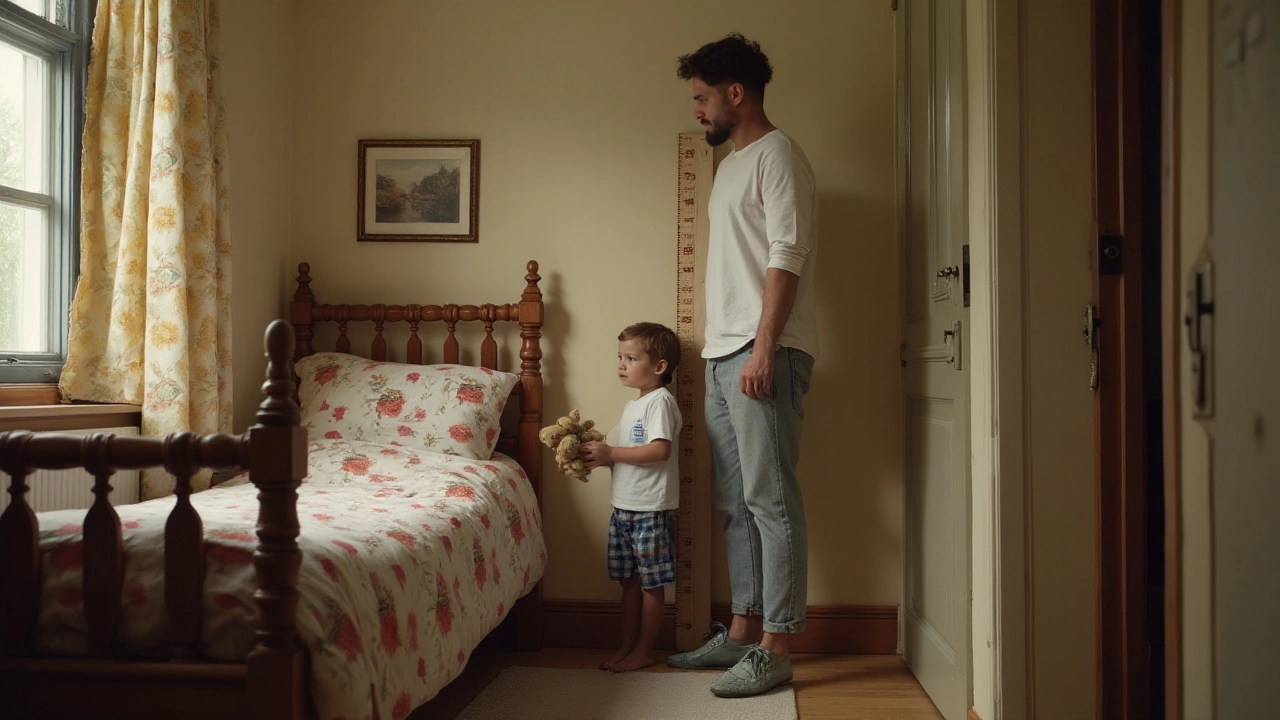
Safety Considerations
Ensuring the safety of your child during the transition from a toddler bed to a larger kid bed is paramount. Safety considerations are not only about choosing the right size but also ensuring that every aspect of their new sleep environment supports their wellbeing. This shift requires particular attention to potential hazards that come with a larger bed and different room arrangement.
First, you need to focus on the sleep safety of the new bed. If your child is moving to a standard single bed, consider installing guardrails on the sides. These are essential for preventing falls, which are a common concern during this transition period. Look for rails that are sturdy and easy to install, ensuring they are compatible with the bed's design.
An equally important aspect is the placement of the new bed. Make sure the bed is not positioned near windows or other furniture with sharp edges. Creating a safe zone around the bed will help minimize injuries. Opt for a position that allows maximum supervision and easy access, providing peace of mind throughout the night.
Consider the height of the bed too. A lower bed is often more suitable as it reduces the impact of a fall, should one occur. If the bed frame is high, use a step stool or other safe climbing aid for your child to access the bed independently. Remember, fostering independence is as crucial as maintaining safety.
When setting up a child's room, fewer pieces of furniture might sometimes mean more safety. Eliminate any unnecessary items that can cause clutter. Children tend to be curious by nature, often dashing around without minding potential bumps. Less clutter also makes it easier to visually scan the room for safety audits.
The mattress is another critical consideration. Make sure it fits snugly within the frame to prevent entrapment or entanglement. A mattress that is too large or too small can create gaps that are dangerous for young children. Additionally, choose a mattress that supports proper spinal alignment as children's bones are still developing.
As safety is a primary concern for many parents, the Consumer Product Safety Commission (CPSC) provides guidelines for creating a safe sleeping space for children. A respected mother and parenting expert, Jane Smith, who highlights the need for consistency and routine during this transition, once said, "Children thrive in environments where safety meets comfort, allowing them to explore and sleep soundly."
Lastly, regularly inspect the bed for wear and tear. Loose screws or cracked wood can compromise the integrity of the bed and pose hidden dangers. Maintenance of the bed, alongside regular safety checks, is essential to ensure the longevity and safety of your child's sleeping arrangements.
Bed Size and Space Needs
When it comes to estimating the right toddler beds size for your child, several factors come to play, primarily focusing on their current growth and future needs. The transition from a toddler bed to a twin or full-size bed is crucial, not only for their comfort but also considering the spatial dynamics of your home. Typically, a toddler bed is designed to accommodate a child until they reach about 50 pounds, which generally happens between the ages of 4 and 6. Yet, this isn't just about weight; it's about the physical space that becomes increasingly cramped as your child grows taller and begins to stretch out more in their sleep.
In many families, the decision to transition is influenced heavily by space constraints. A full-sized bed offers more room for a growing child, yet it takes up significant space in a bedroom, which may not always be feasible. Choosing a twin bed can often balance this scale. Twin beds are usually around 38 inches in width and 75 inches in length, making them a suitable upgrade from toddler beds, which are approximately the size of a crib. This switch not only provides them with more sleeping space but also supports them as they grow older, without necessitating another transition too soon.
The placement of the bed within the room is another important consideration. The bed should be situated in a way that there is ample room to move around, keeping the area uncluttered to prevent accidents. The bed can double as a play area, storing toys underneath to maximize space and encourage creative play. It's efficient and practical to consider multifunctional furniture that complements the room's layout without compromising comfort. For instance, loft beds with built-in desks or shelves can be a great option for smaller rooms, allowing for a study area as your child enters schooling age.
"A well-thought-out bedroom design can enhance a child's development by offering them a space that grows with them," remarks interior designer Jane Daniels, emphasizing the importance of planning ahead.The key to making the most out of your space is planning for the years to come. A child-friendly room doesn't mean it's exclusively for children—consider decor and furniture that will appeal as your child matures. Opt for neutral colors and robust furniture designs that are versatile enough to evolve with different themes and preferences. Engage your child in the decision-making process to reflect their personality and interests, as this helps create a space where they feel both comfortable and excited to spend time.
Sleep safety is also paramount when considering space and bed size. Ensure that the bed you choose meets safety standards, including sturdy railings and no sharp edges. Additionally, make certain the mattress fits perfectly within the bed frame to avoid any gaps that could pose a threat. Nightlights and bedside barriers can provide extra assurance of safety, especially during the initial phase of transitioning to a bigger bed.
The journey of moving from a toddler bed involves more than just physical transitions—it encapsulates the emotional growth of your child gaining confidence and independence. As you plan, consider not only the immediate needs but also strategically think ahead to accommodate longer-term needs, making sure you have ample time and resources ready for a seamless transition. This proactive approach empowers both you and your child, turning what could be a daunting change into an exciting step towards their growing up.
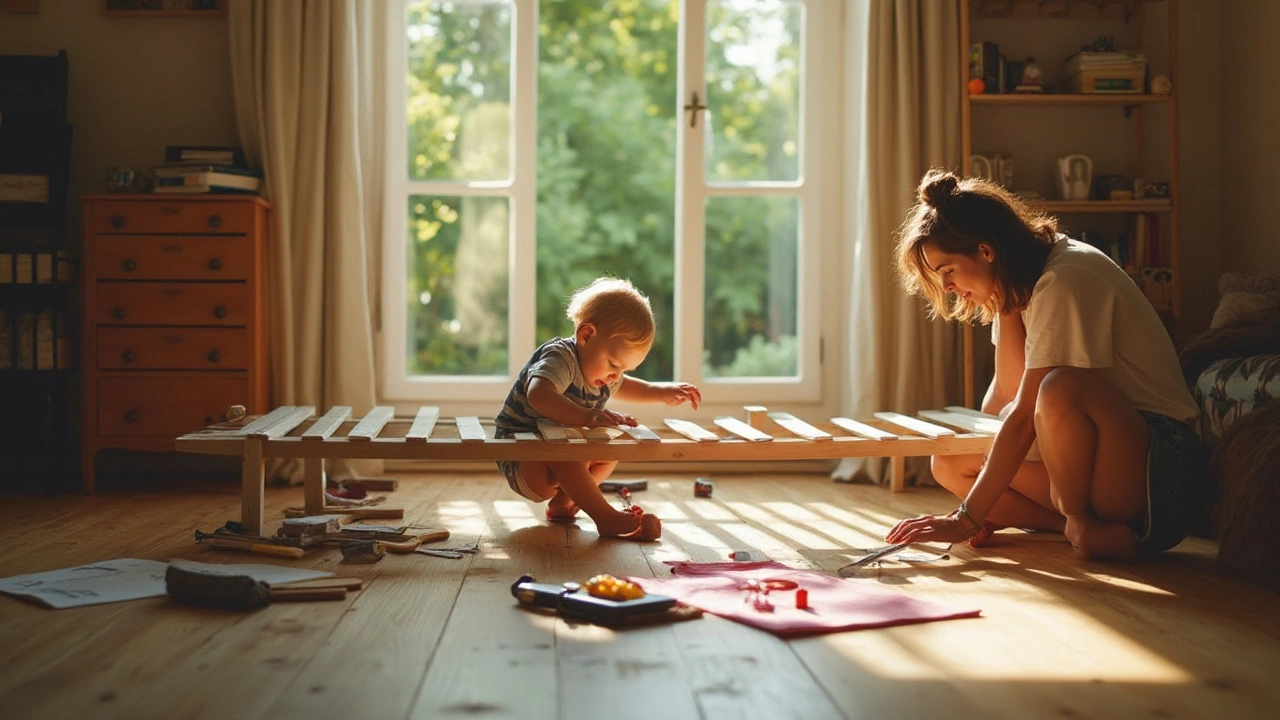
Making the Transition Smooth
Helping your child transition to a regular bed can be a momentous occasion. The key to a smooth transition is understanding your child's readiness and taking gradual steps to ease the change. Begin by involving them in the process of choosing their new bed. This can instill a sense of ownership and excitement about their new sleeping arrangement. Let them pick out bedsheets or a comforter with their favorite colors or characters. This personalization can make the space feel uniquely theirs and create a positive association with the new setup.
While making this shift, safety remains a paramount consideration. Ensure that the bed frame is sturdy and that any sharp corners are adequately cushioned. Consider placing a rug or soft mat around the bed to soften any potential tumbles. Using a bed rail can prevent accidental falls during the night, a common concern for children who are restless sleepers. Remember to position the bed away from windows, radiators, or other hazards where your child could hurt themselves during sleep.
"The right set-up can make all the difference," suggests Dr. Margo Ellis, a child psychologist. "By making your child part of the decision-making, you're not only smoothing the transition but also promoting their independence and decision-making skills."
Set a gradual routine for bedtime, which might include reading a story, sharing a moment to talk about the day's events, or singing a favorite lullaby. Consistency is critical; establishing a bedtime ritual can foster a sense of security. As they settle into their new bed, continue to check in, offer reassurance and acknowledge any fears they may express. Open communication can alleviate night-time anxieties that occasionally surface during such transitional phases.
Create a safe and inviting environment by keeping the bedroom tidy and free of distractions. A night light can provide a comforting glow, reassuring your child if they wake up during the night. You might also consider employing a gradual transition by starting with naps in the new bed first, then moving to full nights, allowing your child to acclimate at their own pace. This incremental approach can make the move feel less daunting.
Implementing these strategies not only makes the change more seamless but also helps your child develop a healthy sleep routine. Remain patient and supportive; remember that every child is unique, and they will adjust in their own time. Celebrate this new phase in their development with encouragement and positivity, and soon their toddler bed will be fondly remembered as a milestone in their journey to becoming a "big kid."
Tips for Parents
When approaching the vital step of moving your little one from a toddler bed to a standard-sized bed, parents should take a holistic approach. This process is as much about emotional readiness as it is about physical growth. One of the most practical steps is observing your child's sleep habits and establishing a consistent bedtime routine. This helps them to feel more secure and adjusts their mindset towards a new sleep environment. If your child starts climbing out of the toddler bed or complains of discomfort, it might be time to make the switch.
To ensure a safe transition, incorporating the right safety measures is critical. Consider placing the new bed in a similar location to the old one, so the change in environment is not too drastic. As an added measure, install bed rails to prevent falls. Most injuries occur when children roll out of bed during the night, which can be particularly alarming for both the child and the parent. Keep the floor clear of toys and obstructions to minimize potential risks. Consistently applying these practices will make the transition much more manageable and promote a sense of safety.
"Safety during a child’s sleep is non-negotiable, and it’s always wise to prioritize your child’s health and comfort over aesthetic preferences” - Child Safety Association
Don't underestimate the importance of engaging your child actively in this process. Allow them to participate in choosing their new bed or bedding, giving them a sense of control over the change. This can significantly boost their excitement about moving to a 'big kid' bed. Children, by nature, feel more invested in transitions when they can make choices, so giving them freedom in this area can reduce potential resistance. Offering them that autonomy can also teach independent thinking and decision-making skills.
Remember, every child is unique, and so is their timeline for outgrowing a toddler bed. It is sometimes helpful to chat with other parents or seek guidance from pediatricians to cross-reference insights or seek advice tailored to your child's specific needs. There might be instances when a child expresses readiness for a change before they physically need it, thanks to cues they gather from their older siblings or peers. On the flip side, some children might need extra time, comfort, and reassurance before they are prepared emotionally to take this next step.
For organizational purposes, it might be beneficial to set up a clear transition plan. This should include deciding where to buy the bed, when to make the purchase, and an estimated timeline for fully retiring the toddler bed. You can organize these tasks into a simple plan or list. During this transition phase, ensure that your child's sleep remains uninterrupted. Whilst reaching milestones is something to strive for, maintaining adequate rest is the priority.
- Observe your child's growth and comfort levels.
- Engage your child in bed choice decisions.
- Prioritize safety with bed rails and by clearing the floor of hazards.
- Seek guidance from professionals when unsure.
- Draft a transitional timeline to ensure a smooth changeover without rush.
Lastly, celebrate this new chapter. Moving from a toddler bed to a larger bed is not just a physical transition but also an emotional one. Acknowledge this moment in your family life, perhaps with a small celebration or simply by recognizing your child's growth and maturity. This can create a positive memory around the experience that your child cherishes. At the end of the day, each milestone reached is not just a reflection of your child's development but also a testament to your journey as a parent.
